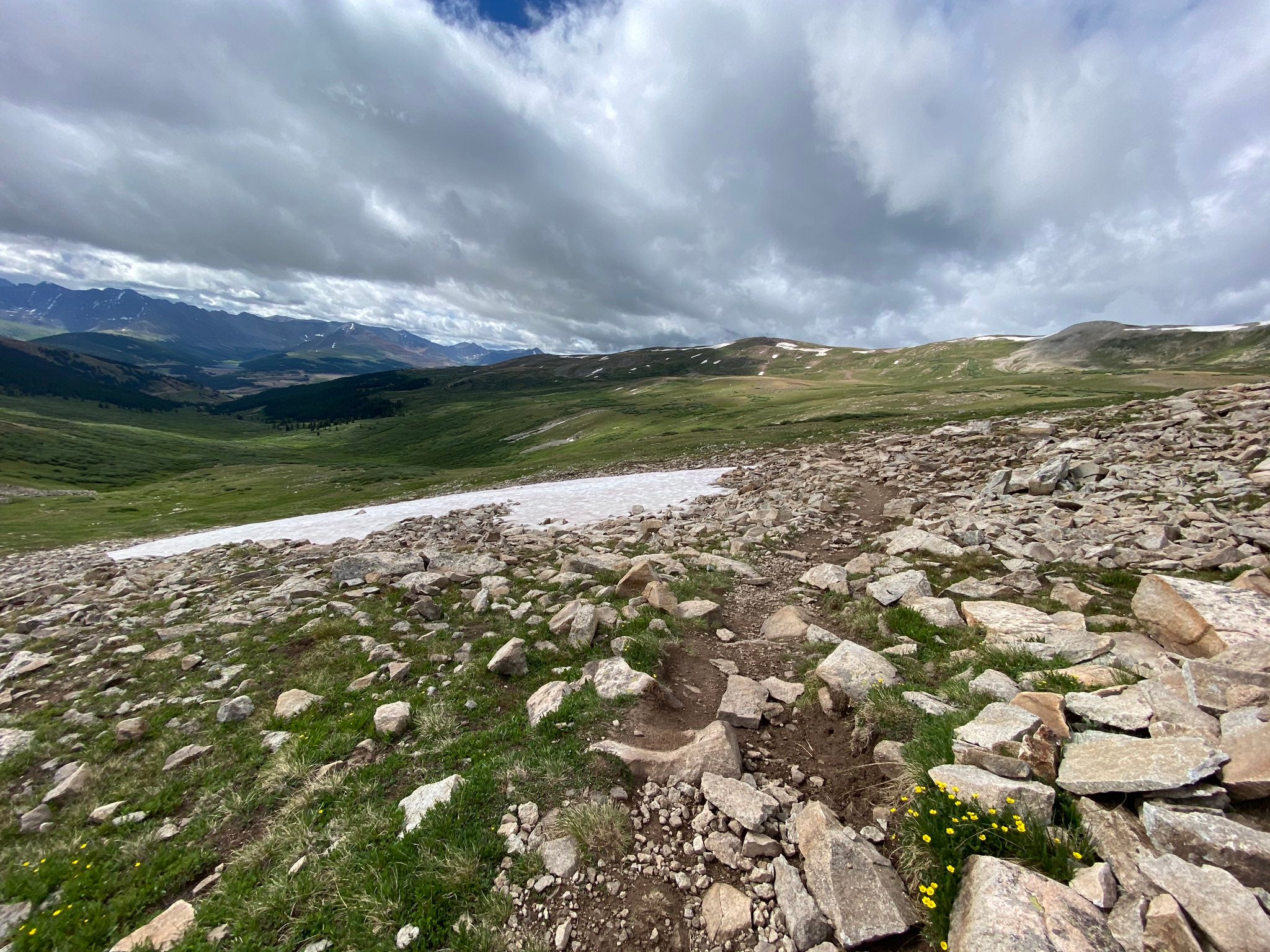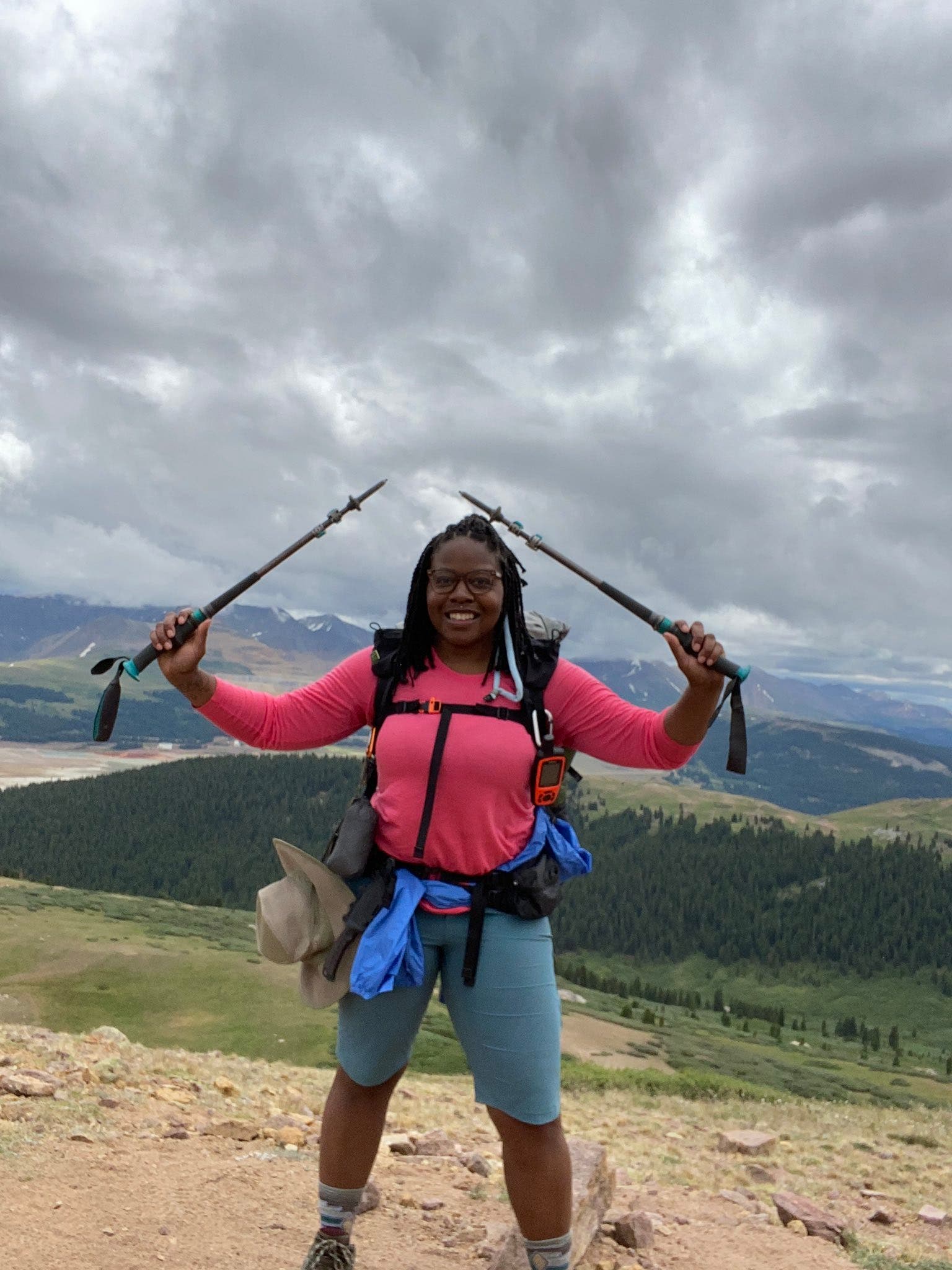Learning to Love Type 2 Fun

'Patricia Cameron'
Patricia “Blackpacker” Cameron is thru-hiking the Colorado Trail and chronicling the experience for us. Read part 1 of her trail diary.
My first week on the trail, a hiker asked me if I had ever heard of type 2 fun. Before that, I didn’t realize that there were different kinds of fun, but I soon learned to tell them apart. Type 1 fun is plain and simple fun: lapping runs at the ski resort or riding your bike. Type 3 isn’t really fun at all (think forgetting your tent in a rainstorm.) Type 2, on the other hand, is a little bit of both: an experience that is unimaginably tough in real time, but morphs into an epic adventure of glory and survival when you retell it. That’s the Colorado Trail.
Back at home, I had a routine. Any given day was a combination of the same few tasks and events: work, emails, raising my son, eating, chasing sleep. Out here on the trail I’m still attending to some of those immediate needs, but it’s all mixed with a steady diet of pain.
I’m not really a breakfast person out here. I don’t tend to eat a lot in the morning: For me it is easier to wake up and get hiking than it is to try to force feed myself. Instead, I drink as much water as I can (as long as I am near a water source and not dry camping) along with a couple of ibuprofen to get ready for the foot swelling I know I’m going to have to deal with later in the day. Depending on the previous night’s weather, I may attempt to at least partially dry my tent and sleeping bag before packing them away. If I have time, I do calf stretches to get prepared for double-digit mileage.
More than anything, my success depends on how much my feet can tolerate. It’s largely a matter of how much discomfort I allow myself to acknowledge: The pain itself seems inevitable.

The most recent challenge came while hiking over Searle Pass. On any given day I am the slowest person in the pack. By noon on this particular day, I was still miles from dropping below treeline when the steady stream of hikers passing me stopped and I realized I was bringing up the rear again. I should have crossed the pass hours earlier to reduce the risk of being caught in a storm, but the aforementioned wet morning slowed me down mentally as well as physically. As I crossed the ridge I saw dark clouds rolling in, and I still had over 5 miles of exposure left. I contemplated continuing on, but the rumble of thunder changed my mind. I thought of my 13-year-old son and my decision was made. I quickly made my way back down off of the ridge to an alcove of pine trees which would become my home for the night.
When the troubles of the trail land on me—sore feet or lightning or anything else—I remind myself that I’ve been through worse—far worse. When my son was born, I developed eclampsia, and both I and my baby needed to be resuscitated. I don’t remember any part of labor and delivery because of the seizures that racked my body as it failed under my rising blood pressure. What I’ve come to understand in hindsight is just how much my body is capable of. My body fought to stay alive and save my child without any conscious effort. Compared to that, what’s a little foot pain, or a sprint down a mountain?
I cursed the wet morning, the slow start, and the arch and heel pain until dusk, when I had time for a small meal. By then, most of the pain and fear had given way to awe. It occurred to me that this was that type 2 fun I had heard about: I was surrounded by rocky cliffs on all sides, a few pine trees hanging on to the sides of the ridge, a perfectly temperate and pleasant breeze, and a tasty dinner of apple slices and freeze-dried cheese
When you’re hiking for hours every day, there’s a lot of quiet time to think about what’s chasing you from your past. It’s at moments like this that I think of the trauma of my birthing experience and how it informed my power and desire to thrive. Clearly, I can tolerate much more physical discomfort than I believe I can. So tomorrow, I’m going to wake, stretch, warm up my exhausted muscles, and start hiking. Whatever pain or fear the trail has in store for me, I’m stronger by far.
Ed note: Patricia’s close call with eclampsia isn’t unique: Black mothers die in childbirth at two to three times the rate of white mothers. Learn more and find out how you can help at the National Birth Equity Collaborative.